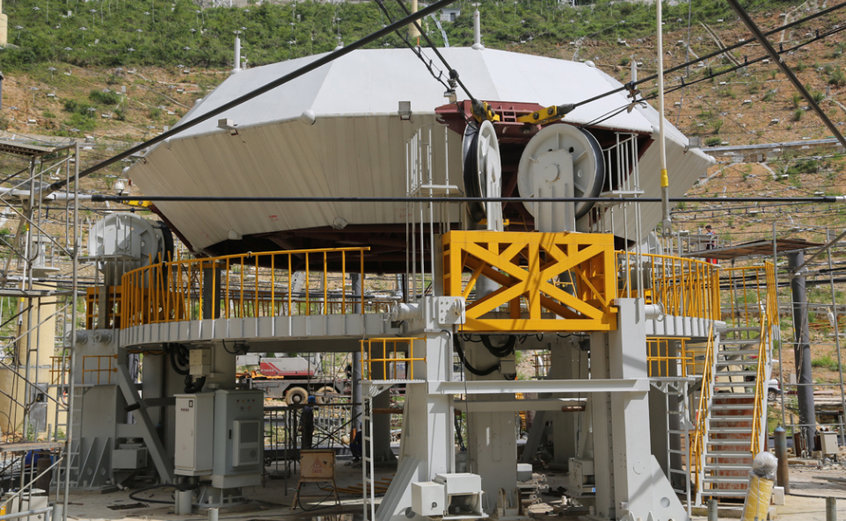China has just finished building the world’s largest single aperture radio telescope in the southwestern province of Guizhou in expectation of an “extraordinary impact” on astronomy.
As the world’s largest single aperture telescope located at an extremely radio-quiet site, its scientific impact on astronomy will be extraordinary, and it will certainly revolutionize other areas of the natural sciences– Nan Rendong, chief scientist
Made up of 4,450 triangular aluminium panels, the $180m telescope’s dish is half a kilometre in diameter, with a total area equivalent in size to 30 football pitches.
It is located in a remote limestone valley in Pingtang County to minimise electromagnetic “noise” from human activity – an important factor in the sensitivity of the instrument, which is known as FAST (an acronym for “Five-hundred-metre Aperture Spherical radio Telescope”).
As GCR reported in February, the government has initiated a process of moving 9,000 residents out of a 5-km radius of the massive dish in order to protect its electromagnetic environment.
FAST will collect radio waves of between 10 and 4,300cm to “listen in” on a wide range of astronomical events, from galaxy formation to stellar collapse. It will also be used to survey “neutral” hydrogen, an important factor in understanding the dynamics of galaxies.

The telescope is located in a valley to minimise electromagnetic radiation from terrestrial sources
“As the world’s largest single aperture telescope located at an extremely radio-quiet site, its scientific impact on astronomy will be extraordinary, and it will certainly revolutionize other areas of the natural sciences,” said Nan Rendong, chief scientist with the project, according to Chinese state news agency Xinhua.
Officially completed on Sunday, 3 July, the gargantuan device has taken the title of world’s largest single aperture telescope from Puerto Rico’s Arecibo Observatory. It is 65% larger than Arecibo and two-and-a-half times as sensitive. Scientists harbour the thrilling hope that if there is evidence of intelligent life elsewhere in the universe, FAST stands a good chance of finding it.
Its panels are also capable of being adjusted to create a 300m sub-dish that can be focused on particular bits of the universe with 10 times the sensitivity of Arecibo. The panels are moved by means of 2,300 steel wires that are connected to electrical motors. They can be adjusted to plus or minus 5mm.

The “cabin” that collects the radio waves under construction
Suspended above the centre of the dish is a 30 ton cabin. This holds nine sets of receivers tuned to pick up and amplify radio frequencies. The exact position of the cabin, and each of the panels, is determined using a system of lasers, which are reflected off more than 1,000 reference points on the structure and collected by three optical sensors. Â
All images courtesy of the FAST project: fast.bao.ac.cn










